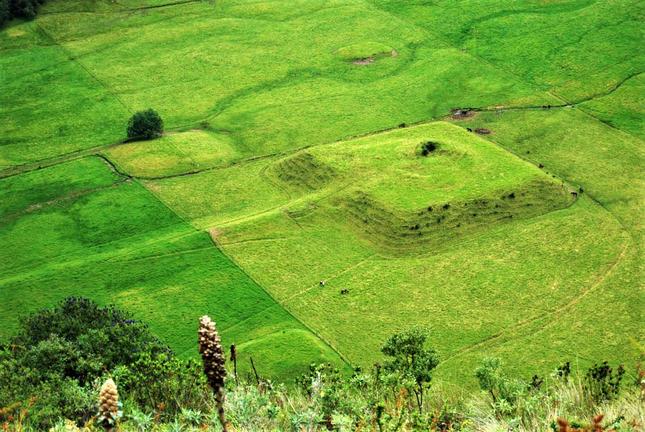An important location for centuries, Zuleta is one of the two best-preserved mound sites of the ancient Caranqui people in Ecuador. It is a living reflection of the region’s history, starting as a refuge from volcanoes, a ceremonial location for Caranqui chiefs, and a rich agricultural resource for the conquering Incas and Spanish.
About 3,500 years ago, the people who became known as the Caranquis constructed these pyramids,and raised fields throughout the region, including at Hacienda Zuleta. They were governed by a complex system of caciques (chiefs), who owed allegiance and paid tribute to a paramount chief. In 1.216 b.C, the Quilotoa volcano erupted produced a major displacement of people to the Zuleta Valley in the Northern Andes. This migration subsequently created around 60 large ramp mound sites in the areas where they settled, including the one at Zuleta. These probably served as elite residences for the region’s ruling chief and the ceremonial center for its surrounding communities. Archaeologists refer to the period associated with the appearance of these large mound sites as the Late Period.
In an attempt to expand, their massive empire north, the fierce Incas arrived in force towards the end of the 15th century. Despite alliances the disparate Caranqui peoples formed to defend their homeland, they were defeated at the infamous battle of Yahuarcocha, the Lake of Blood, where, according to chroniclers, up to 50,000 Caranqui warriors were killed. Evidence of Inca domination still exists in the form of hill-forts or pucarás. The mounds at Zuleta were believed to have been abandoned at this time.
